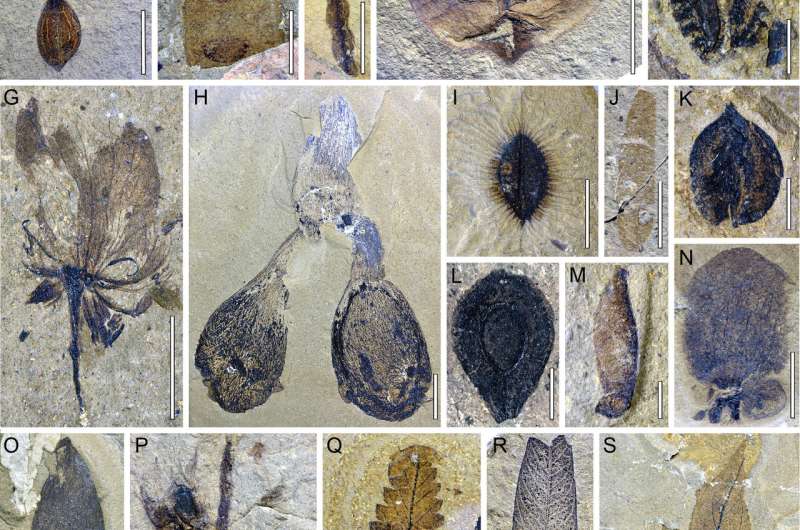Newly discovered fossils prove "Shangri-La"-like ecosystem in central Tibet

Despite decades of investigation, Tibet's ancient topography and its role in climatic and biotic evolution remain speculative due to a paucity of quantitative surface height measurements through time and space, and sparse fossil records.
During the Second Tibetan Plateau Scientific Expedition in Tibet, an international research team from the Xishuangbanna Tropical Botanical Garden (XTBG) and the Institute of Vertebrate Paleontology and Paleoanthropology discovered a highly diverse fossil assemblage from the current elevation of ∼4,850 m in the Bangor Basin in central Tibet.
"These fossils characterize a luxuriant seasonally wet and warm Shangri-La forest that once occupied a deep central Tibetan valley along the Banggong-Nujiang Suture (BNS)," said Dr. SU Tao, who published this research in PNAS.
The 70 plant fossil taxa so far recovered include the first occurrences of several modern Asian lineages and represent a middle Eocene (about 47 million years ago) humid subtropical ecosystem.
Many taxa in the Jianglang flora, e.g., Apocynaceae, Ceratophyllum, Illigera, Lagokarpos, and Vitaceae, represent first discoveries for the plateau, and some are the oldest fossil records for these taxa in Asia, e.g., Apocynaceae, Cedrelospermum, Lagokarpos, and Limnobiophyllum.
"These fossils not only record the diverse composition of the ancient Tibetan biota, but also allow us to constrain the middle Eocene land surface height in central Tibet to ∼1,500 ± 900 m, and quantify the prevailing thermal and hydrological regime," said Prof. Zhou Zhekun of XTBG.
By reconstructing ancient climate parameters encoded in leaf morphological traits, the researchers quantified both the climate and elevation of central Tibet in the middle Eocene. They calculated that the forest grew at an elevation of about 1500 meters within an east-west trending valley under a monsoonal climate.
"In the future, the complex topography of Tibet in the geological past needs to be considered when studying the paleoenvironmental and biodiversity histories on the plateau," said Dr. Su Tao.
More information: Tao Su el al., "A Middle Eocene lowland humid subtropical "Shangri-La" ecosystem in central Tibet," PNAS (2020). www.pnas.org/cgi/doi/10.1073/pnas.2012647117
Journal information: Proceedings of the National Academy of Sciences
Provided by Chinese Academy of Sciences





















